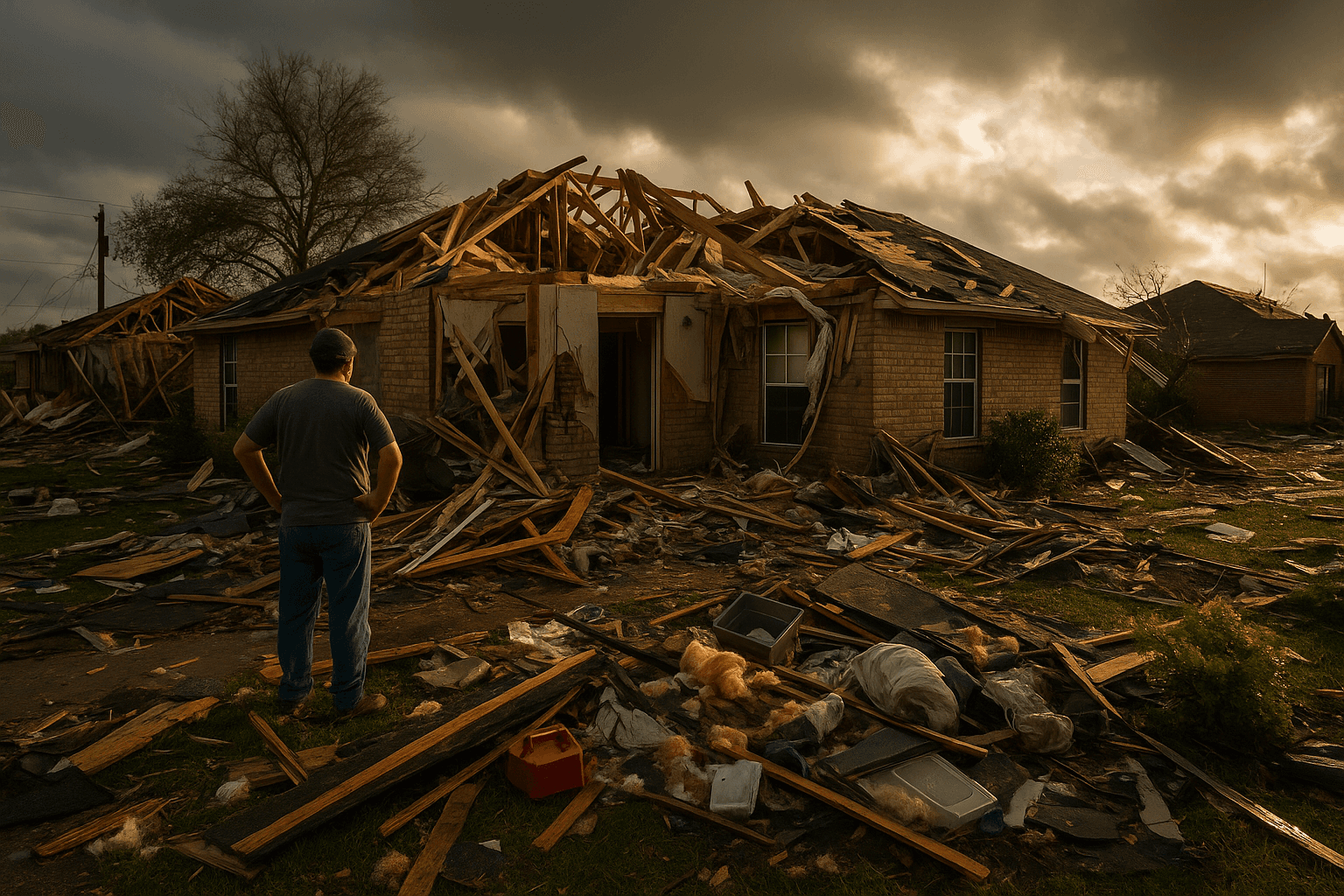More Than 100 Homes Damaged After Tornado Strikes Houston Suburbs
A confirmed tornado and severe thunderstorms ripped through northwest Houston and adjacent suburbs on November 24, damaging more than 100 homes and disrupting services during a major holiday travel period. The storm exposed vulnerabilities in local infrastructure and emergency coordination, raising questions for officials about preparedness and recovery in densely populated communities.
Emergency crews worked into the night after a confirmed tornado swept through neighborhoods in northwest Houston and nearby suburbs on November 24, leaving a path of roof and tree damage across Memorial Northwest and communities around Cypress, Klein and Spring. Local fire departments and constable offices reported widespread property damage, with drone footage and homeowner images showing garages ripped away, downed power lines and scattered debris across residential streets. Officials said there were no fatalities and only a small number of injuries reported in the immediate aftermath.
First responders focused on clearing debris and inspecting potential gas leaks, amid warnings from authorities for residents to avoid downed power lines and to report structural damage and gas odors. The Federal Aviation Administration instituted temporary ground stops on and off as storms moved through the region, and several local airports experienced short interruptions to operations. Those disruptions compounded travel difficulties on a day when many residents planned holiday trips, intensifying concerns about commuter safety and airport resilience.
The event underscores persistent challenges for emergency management in the Houston metropolitan area, where rapid growth has placed more homes in proximity to vulnerable tree canopies and aging utility infrastructure. Local emergency operations centers activated mutual aid protocols and coordinated with utility companies to prioritize power line safety and restoration, but authorities acknowledged that restoring full services in harder hit neighborhoods may take days depending on access and weather conditions.
Policy considerations will likely move to the fore as communities assess recovery needs. City and county officials face decisions about allocating resources for debris removal, temporary sheltering and structural inspections. The storm also highlights the role of building standards and vegetation management in attenuating wind damage. In heavily tree lined suburbs, falling limbs and uprooted trees were a major source of structural impact, suggesting that investment in consistent tree maintenance and right of way clearance could reduce future vulnerabilities.

The timing of the tornado during a high travel period also raises questions about coordination between different levels of government and critical infrastructure operators. Airports and the FAA scrambled to manage flights as the severe weather developed. Utility providers and public safety agencies must balance rapid restoration with safety, a task made more complicated in densely populated residential corridors where downed lines and gas leaks create immediate hazards.
Civic engagement and local governance will play a part in the recovery. Neighborhood associations and volunteer groups are often a first line of mutual aid, while elected officials will be judged on the speed and transparency of relief efforts. Federal assistance mechanisms exist for larger scale disasters, but those typically require documentation of damage and coordinated requests from municipal authorities, placing a premium on timely damage assessment and reporting.
As residents document losses and begin repairs, the storm serves as a reminder of the increasing frequency of late season severe convective storms and the importance of preparedness across the region. For now the focus remains on ensuring safety, restoring essential services and supporting the households whose homes were damaged in one of the busiest travel periods of the year.


